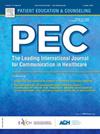A proposal to involve people living with rare and complex conditions in the development of clinical practice guidelines
IF 2.9
2区 医学
Q2 PUBLIC, ENVIRONMENTAL & OCCUPATIONAL HEALTH
引用次数: 0
Abstract
Objective
Develop a proposal to involve people living with rare and complex conditions in the development of clinical practice guidelines (CPGs) based on a systematic review of qualitative literature.
Methods
A systematic review was conducted using medical subject heading-term and text-word search strategies to identify qualitative literature on patient living with rare diseases (PLWRD) involvement during CPG development and in research studies. Databases were searched for literature in English or Spanish, published until April 2024.
Results
64 publications were included in this review, underscoring the critical importance of PLWRD involvement in the CPGs development. The studies reported different strategies to facilitate the involvement of patients and collect relevant information from the patient community. The Guideline Development Group and the Core Writing Group should include representatives of the patient community, closely communicating with a patient advisory group to facilitate a broader patient perspective. Patient representatives should be engaged throughout all stages of CPG development, from defining the scope to implementation.
Conclusion
This proposal offers a framework for actively involve PLWRD throughout the CPGs development process, aiming to produce more inclusive and practical recommendations that better reflect real-world patient needs.
求助全文
约1分钟内获得全文
求助全文
来源期刊

Patient Education and Counseling
医学-公共卫生、环境卫生与职业卫生
CiteScore
5.60
自引率
11.40%
发文量
384
审稿时长
46 days
期刊介绍:
Patient Education and Counseling is an interdisciplinary, international journal for patient education and health promotion researchers, managers and clinicians. The journal seeks to explore and elucidate the educational, counseling and communication models in health care. Its aim is to provide a forum for fundamental as well as applied research, and to promote the study of organizational issues involved with the delivery of patient education, counseling, health promotion services and training models in improving communication between providers and patients.
 求助内容:
求助内容: 应助结果提醒方式:
应助结果提醒方式:


